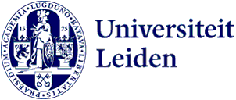Efektivitas Kitosan Cangkang Kepiting sebagai Biokoagulan Mikroplastik Polistirena (PS) dalam Air Limbah Effectiveness of Crab Shell Chitosan as a Biocoagulant for Polystyrene (PS) Microplastics in Wastewater

Main Article Content
Abstract
This study is motivated by the limited research on the use of natural biocoagulants for microplastic removal, despite the significant environmental and human health impacts of this phenomenon. The aim of this research is to analyze the influence of pH variation, chitosan dosage, and settling time on the coagulation effectiveness of polystyrene (PS) microplastics, and to determine the process's optimum conditions. A quantitative method was employed, using PS microplastic solution samples (30 mg/L) treated under varying pH levels (4–10), chitosan doses (10–50 mg/L), and settling times (10–50 minutes). Data were collected through laboratory experiments and analyzed using Fourier Transform Infrared (FTIR) spectroscopy and stereo microscopy. The results indicate that optimum conditions were achieved at pH 6, with a chitosan dose of 30 mg/L and a settling time of 30 minutes, resulting in microplastic removal efficiency exceeding 90%. These findings support the theory of electrostatic interactions between the amine groups in chitosan and the negatively charged surface of microplastics. The main conclusion is that crab shell-derived chitosan is effective as an environmentally friendly biocoagulant for reducing microplastic content in wastewater. The study contributes to the growing literature on biocoagulation and offers practical recommendations for wastewater treatment managers to adopt sustainable natural coagulants. Moreover, it opens avenues for future research on chitosan-based composites for treating various types of microplastics.
Downloads
Article Details

Authors retain copyright and grant the journal right of first publication with the work simultaneously licensed under a Creative Commons Attribution-NonCommercial-ShareAlike 4.0 International License that allows others to share the work with an acknowledgement of the work's authorship and initial publication in this journal.
References
Azizi, N., Pirsaheb, M., Jaafarzadeh, N., & Nabizadeh Nodehi, R. (2023). Microplastics removal from aquatic environment by coagulation: Selecting the best coagulant based on variables determined from a systematic review. Heliyon, 9(5), e15664. https://doi.org/10.1016/j.heliyon.2023.e15664
Bahrodin, M. B., Zaidi, N. S., Hussein, N., Sillanpää, M., Prasetyo, D. D., & Syafiuddin, A. (2021). Recent advances on coagulation-based treatment of wastewater: Transition from chemical to natural coagulant. Current Pollution Reports, 7(3), 379–391.
Berliana, K. S., & Nurhayati, E. (2022). Pengolahan Air Minum Tegal Besar Di Pdam.
Castro Monsores, K. G. de, Silva, A. O. da, Sant’ Ana Oliveira, S. de, Weber, R. P., Filho, P. F., & Monteiro, S. N. (2021). Influence of ultraviolet radiation on polystyrene. Journal of Materials Research and Technology, 13, 359–365. https://doi.org/10.1016/j.jmrt.2021.04.035
Djajadi, D. T., Müller, S., Fiutowski, J., Rubahn, H. G., Thygesen, L. G., & Posth, N. R. (2024). Interaction of chitosan with nanoplastic in water: The effect of environmental conditions, particle properties, and potential for in situ remediation. Science of the Total Environment, 907(July 2023), 167918. https://doi.org/10.1016/j.scitotenv.2023.167918
Esmaeili Nasrabadi, A., Babaei, N., & Bonyadi, Z. (2025). Effect of ozonation on the morphological characteristics and adsorption behavior of polystyrene microplastics in aqueous environments. Applied Water Science, 15(5), 1–8. https://doi.org/10.1007/s13201-025-02443-z
Fitriyah, A., Syafrudin, S., & Sudarno, S. (2022). Identifikasi Karakteristik Fisik Mikroplastik di Sungai Kalimas, Surabaya, Jawa Timur. Jurnal Kesehatan Lingkungan Indonesia, 21(3), 350–357. https://doi.org/10.14710/jkli.21.3.350-357
Foladori, P., Lucchini, G., Torboli, A., & Bruni, L. (2024). Flow cytometry as a tool for the rapid enumeration of 1-μm microplastics spiked in wastewater and activated sludge after coagulation-flocculation-sedimentation. Chemosphere, 359(January), 142328. https://doi.org/10.1016/j.chemosphere.2024.142328
Ghanem, S. N., Marzouk, M. I., Tawfik, M. E., & Eskander, S. B. (2025). Spectroscopic approaches for structural analysis of extracted chitosan generated from chitin deacetylated for escalated periods. BMC Chemistry, 19(1). https://doi.org/10.1186/s13065-025-01558-3
Hong, F., Qiu, P., Wang, Y., Ren, P., Liu, J., Zhao, J., & Gou, D. (2024). Chitosan-based hydrogels: From preparation to applications, a review. Food Chemistry: X, 21(8326), 101095. https://doi.org/10.1016/j.fochx.2023.101095
Julianti, E., Fabiani, V. A., & Asriza, R. O. (2020). The Sintesis dan Karakterisasi Komposit Fe3O4/Kitosan/Kaolin Bangka. Stannum : Jurnal Sains Dan Terapan Kimia, 2(2), 10–15. https://doi.org/10.33019/jstk.v2i2.1897
Khan, M. T., Ahmad, M., Hossain, M. F., Nawab, A., Ahmad, I., Ahmad, K., & Panyametheekul, S. (2023). Microplastic removal by coagulation: a review of optimizing the reaction conditions and mechanisms. Water Emerging Contaminants and Nanoplastics, 2(4). https://doi.org/10.20517/wecn.2023.39
Naidir, F., Lubena, Andrian, B., & Sandi, A. D. (2020). Penurunan Turbidity, pH, Kadar Fe Menggunakan Biokoagulan Kitosan dari Cangkang Rajungan (Portunus pelagicus). Jurnal Konversi, 9(1), 7–16.
Putranto, P. A., Khoironi, A., & Baihaqi, R. A. (2023). Journal of Emerging Science and Engineering Optimisation of chitosan as a natural flocculant for microplastic remediation. J. Emerg. Sci. Eng, 2023(2), 44–50. http://creativecommons.org/licenses/by/4.0/
Xue, J., Peldszus, S., Van Dyke, M. I., & Huck, P. M. (2021). Removal of polystyrene microplastic spheres by alum-based coagulation-flocculation-sedimentation (CFS) treatment of surface waters. Chemical Engineering Journal, 422(April), 130023. https://doi.org/10.1016/j.cej.2021.130023
Yao, J., Peng, Z., Chen, W., Lin, Q., Cheng, M., Li, H., Yang, Y., & Yang, H. Y. (2023). Surface characteristics of polystyrene microplastics mainly determine their coagulation performances. Marine Pollution Bulletin, 186, 114347.
Find the perfect home for your research! If this journal isn't the right fit, don't worry—we offer a wide range of journals covering diverse fields of study. Explore our other journals to discover the ideal platform for your work and maximize its impact. Browse now and take the next step in publishing your research:
| HOME | Yasin | AlSys | Anwarul | Masaliq | Arzusin | Tsaqofah | Ahkam | AlDyas | Mikailalsys | Edumalsys | Alsystech | AJSTEA | AJECEE | AJISD | IJHESS | IJEMT | IJECS | MJMS | MJAEI | AMJSAI | AJBMBR | AJSTM | AJCMPR | AJMSPHR | KIJST | KIJEIT | KIJAHRS |





















